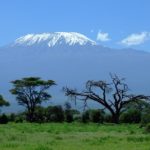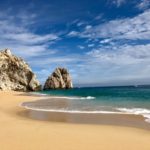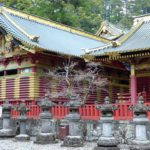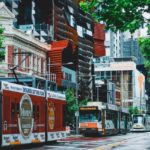A Kaleidoscope of Montenegro, Croatia & Bosnia-Herzegovina
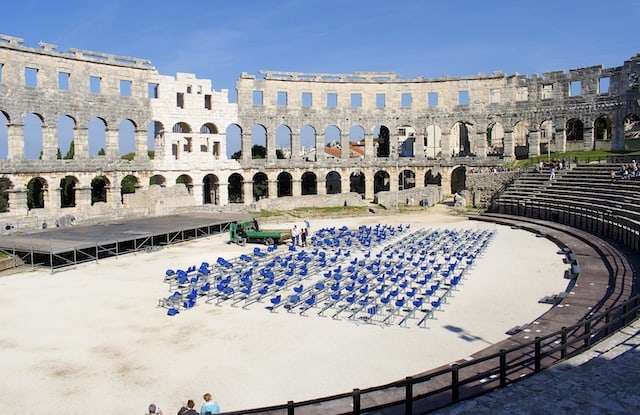
Sparkling blues seas of the Adriatic, 13th Century fairytale castles, chocolate cake to die for, winery tours with testings, beautiful Gothic cathedrals, and history from many centuries as entwined as a hair braid. War with Italian domination, or Austro-Hungarian, Communism or Serbian aggression. Herzegovia with its mosques, calls to prayer and the impressive rebuilt humpback bridge of Mostar which linked the Christians on one bank with Muslims on the other and which was bombed in 1993 in the Balkan War.
Stately century-old trees with waterfalls spilling down the hillside wherever you look in the beautiful Krka National Park. Priceless Istrian white truffles, local delicacies to satisfy any gastronomic connoisseur. The 8th century stone-walled village near Opatije with its steep cobblestoned streets, mostly steps, where every dresser, piano or desk has to be carried to its home because there are no vehicles at all. The original communal mill still produces olive oil, a horse turning the heavy circular stone for 31/2 hour shifts, crushing the olives, just as donkeys before it have done for many centuries.
Harmonious Clappa singers in the DIocletian palace built in Split as a retirement home for the Roman Emperor in 305 AD, mix in my mind with the exquisite sounds of the quartet who played for us in St. Saviour’s Church in Dubrovnik, where we could walk the 6,363 feet around the walls surrounding this fortified city since the 10th century.
The memory of those sweet melodies blend into the harsher sounds of the Zadar Sea organ. The variable diameter and length of polystyrene tubes stored out of sight under the marble steps to the sea, mimic the sounds of an organ as the sea rushes in and then out, so every hour and every day, the sea symphony is unique.
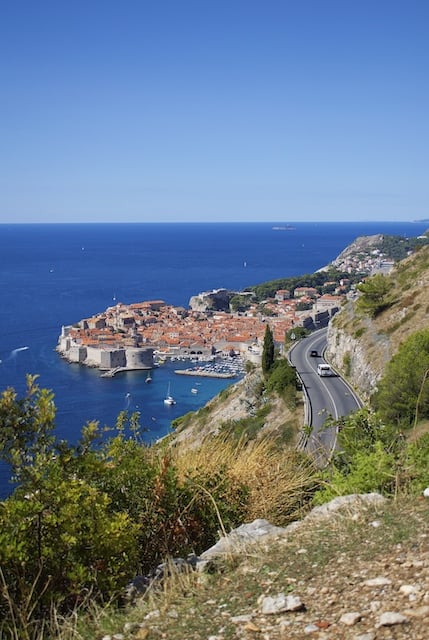
Dubrovnik was founded in the 7th century and was under Byzantine, then Venetian rule from 1205 – 1358, but declared its independence as the Republic of Ragusa in 1382. In the 15th century the people instituted a democratic system of government with an Upper and Lower Council and an elected rotating Rector, all housed in the Rector’s Palace designed by the Neapolitan architect who also developed a sophisticated water system for Dubrovnik in 1438. Onofrio is memorialized in a beautiful fountain just inside one of the city gates.
The city has been the pride of the Dalmation area and is a Unesco Heritage Site.
The city has been the pride of the Dalmation area and is a Unesco Heritage Site.
After World War ll finished in 1945, the Yugoslav Federal State was founded which included many of the islands and parts of the coast most recently under Italian rule. Marshall Tito stepped up to lead the Communist Party and held the multiethnic groups together. Under the communists, property was confiscated from the wealthy and distributed among the populous. Never one to conform, Tito split from the Soviet Union in 1948 and pursued his own policy of non-alignment, based on the principles of communism, Tito was born and raised poor in Kumrovic, a farming village near Zagreb which we visited.
He only attended the village school for 4 years from age 8 – 12 then tried a variety of factory and manual labor jobs before being conscripted into the Austro-Hungarian Army at age 18 and trained as a non-commissioned officer More tension developed between ethnic groups after he died in 1980, and once the Soviet Union collapsed in 1991, a referendum in primarily Catholic Croatia resulted in secession from the socialist Tito regime.
Serbs, supported by groups from the Yugoslav People’s Army, attacked parts of Croatia and Slovenia and surrounded Dubrovnik positioning themselves on Mount SRD overlooking the city. They dropped 2000 bombs during the 7 month siege destroying many art and architectural treasures.
My mind is spinning after 3 weeks in Montenegro, Croatia, and Bosnia.
The memories come thick and fast and refuse to be sorted into neat packages of days or even visits. My mind is spinning after 3 weeks in Montenegro, Croatia, and Bosnia. This multiethnic, historically interesting area bordering the Adriatic Sea with it’s spectacular scenery and cultural accomplishments provides experiences to tempt any traveler.
From the 6th-best-preserved and one of the largest Roman Arenas in the world in Pula at the southern tip of the Istrian Peninsula in northern Croatia to the partly-paved road through the Lovcen National Park from the ancient royal capital of Cetinje in Montenegro requiring one to negotiate with local construction crews before descending to the Bay of Kotor via 36 hairpin bends, the trip was a kaleidoscope, dipping into different centuries, many cultures and geological formations with delights for all the senses.
A Kaleidoscope of Montenegro, Croatia & Bosnia-Herzegovina photo credits by Margery Franklin.




